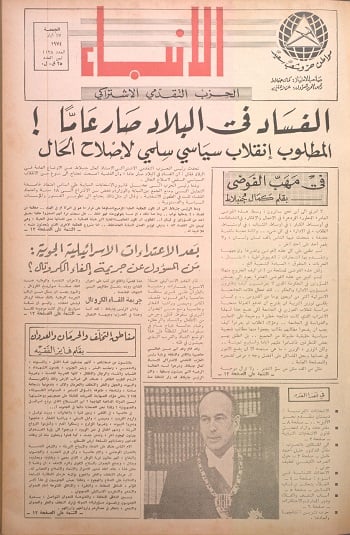Do Trump And Clinton Matter?
By Benjamin Wallace-Wells / New Yorker
25 مايو 2016

Here is a rough recent accounting of the relationship between Donald Trump and the Republican Party. The last G.O.P. nominee for President, Mitt Romney, delivered a speech calling Trump “a phony, a fraud,” and warned that his economic policies would lead the country into a “prolonged recession.” The previous nominee, John McCain, called Trump “uninformed and indeed dangerous.” The Speaker of the House, Paul Ryan, took the extraordinary step of announcing that he was “not ready” to support Trump, though no other candidate remained in the race. The President of the Southern Baptist Convention’s public-policy arm said that Trump has built his life on a “swindle that oppresses the poorest and the most desperate,” and socially conservative radio hosts have amplified that line and made it constant. One of the highest-profile anti-Trump ads, from Hillary Clinton’s campaign, is simply a montage of Republicans attacking him. “A con artist,” Marco Rubio says. “A race-baiting, xenophobic, religious bigot,” Lindsey Graham says. “A pathological liar,” Ted Cruz says.
These are not minor figures within the Party; for most of the current Presidential campaign, their cumulative support was larger than Trump’s. But now we have a crude, early tally of their relative strength. Last Thursday, a New York Times/CBS poll had Hillary Clinton running just six points ahead of her likely opponent. Trump had the support of eighty-five per cent of Republican voters; only six per cent said they would not support him. (On Sunday, an ABC News/Washington Post poll, which had Trump leading Clinton by two points, showed similar results among Republican voters: eighty-five per cent of Republicans were for Trump, eight per cent for Clinton.) As pointed and sustained as the condemnations of Trump by leading conservatives have been, they have not mattered to Republican voters. Lately, even some of Trump’s loudest Republican opponents—such as McCain, who faces a difficult Senate race—have come around.
These are just a couple of polls, taken at one moment in time, and so there are plenty of caveats. Perhaps Clinton’s numbers have been temporarily suppressed by the continued (and increasingly hostile) opposition of Bernie Sanders; according to the ABC/Post poll, Trump has eleven-per-cent support among registered Democrats, which seems unlikely to stick. Perhaps there are many Republican voters who remain blissfully unaware of Trump’s offenses and transgressions, who will be swayed by the wave of negative advertising to come. But Trump did not exactly sneak in under the radar. This is probably the end of the #NeverTrump movement, which looks likely to go down as a deeply felt reaction from conservative influentials that voters did not hear. But these latest numbers also seem to signal something else: that this historically weird race may be turning into an ordinary one, in which the parties matter more than the candidates.
The strong partisanship of the American electorate has been a strain running through political science for decades, at least since the landmark book “The American Voter,” published in 1960. Working from a detailed study of the 1956 Presidential election, the authors argued that a person’s affinity for a party reflects a “psychological identification,” built upon what her parents and friends think, that runs deeper than any intellectual preference. We have, as the contemporary political scientist Donald Green, of Columbia, put it, “partisan hearts and minds.” This isn’t the only theory of how political identification works, but it has been a remarkably durable one.
“Can Hillary Clinton, Goldwater Girl, Win Over Republicans?” aTimes headline wondered this week. (The paper was referring to the fact that Clinton, as a teen-ager, volunteered for Barry Goldwater’s 1964 Presidential campaign.) The Times’ Emma Roller noticed that Clinton’s campaign was arguing that a Trump Presidency posed too much of a “risk,” rather than using words that might “activate Democrats’ rage sensors: ‘racist,’ ‘sexist,’ and ‘crony capitalist,’ “ and wondered whether this might be a play for conservative votes. But there are not many conservative votes to be won: roughly ninety per cent of Republicans have an unfavorable view of Clinton, according to Fox News. The broad gender divide that was a feature of polls on a hypothetical Trump-Clinton race has diminished somewhat as that matchup has become all but certain: in the ABC/Post poll, Clinton’s lead among women was down to fourteen points. That is still a vast gap—double the usual figure—but it is also a sign that the long trajectory of the election is moving voters toward their normal partisan preferences.
In a way, this election can be seen as an ultimate test of how powerful political polarization is. If Trump can receive the same support as Mitt Romney, and if Clinton—who eight years ago ran to the right of Barack Obama, in a Party that since has moved substantially to the left—can receive the same baseline support as the President, then the populist anger that has moved through both primaries this year may matter less than we thought it would. For all the bold talk about how Donald Trump could pick up Bernie Sanders’s voters, or how Hillary Clinton would inherit Jeb Bush’s, that does not appear to be happening. Populism has been an earthquake, but its tremors have not altered the map of electoral politics. There is not much more than an echo of the culture wars of the early aughts in the contest between the casino mogul and the former Secretary of State who attended his wedding, both of them of New York. And yet the basic tribal division of that era persists, red states versus blue states, strong as ever.
Trump needs seventy per cent of white male voters to win, Politicoargued on March 4th. In the Washington Post/ABC poll, he won seventy-six per cent of white men without a college degree. Among those with a college degree, he still led by thirty-three points. It may be that partisan identity has become so powerful that it can serve as a colored container, red or blue, for anything the designated candidate might do or say. But it seems more likely that the map, and the culture war that we believed produced it, was always just a cover for a more intimate political contest: not rural places versus cosmopolitan ones but white men against everyone else.
 عن أمل جنبلاط المتجدد: لبنان يستحق النضال
عن أمل جنبلاط المتجدد: لبنان يستحق النضال
 صحافيون أم عرّافون!
صحافيون أم عرّافون!
 ماذا يجري داخل أروقة بيت الكتائب المركزي؟
ماذا يجري داخل أروقة بيت الكتائب المركزي؟


 عن الخرائط التي تُرسم والإتفاقات التي تتساقط!
عن الخرائط التي تُرسم والإتفاقات التي تتساقط!
 “الإنحراف في الحياة”/ بقلم كمال جنبلاط
“الإنحراف في الحياة”/ بقلم كمال جنبلاط
 هاشتاغ #صار_الوقت يحل أولاً في حلقة جنبلاط
هاشتاغ #صار_الوقت يحل أولاً في حلقة جنبلاط
 طاولة نقاش عن أزمة الصحافة في جامعة AUST
طاولة نقاش عن أزمة الصحافة في جامعة AUST
 عبدالله: ليظهر لنا وزير مكافحة الفساد حرصه في صفقات البواخر والفيول
عبدالله: ليظهر لنا وزير مكافحة الفساد حرصه في صفقات البواخر والفيول
 عبدالله: غريب أمر وزارة مكافحة الفساد!
عبدالله: غريب أمر وزارة مكافحة الفساد!

 Comment to Uri Avnery: How Sad What Is Looming Ahead
Comment to Uri Avnery: How Sad What Is Looming Ahead
 “Not Enough!”
“Not Enough!”
 … لمن لم يقرأ يوسف البعيني/ بقلم وسام شيّا
… لمن لم يقرأ يوسف البعيني/ بقلم وسام شيّا
 كمال جنبلاط في مولده الأول بعد المائة: تعاليمه وأفكاره ما زالت الحلّ/بقلم عزيز المتني
كمال جنبلاط في مولده الأول بعد المائة: تعاليمه وأفكاره ما زالت الحلّ/بقلم عزيز المتني
 رئيس حزب/ وليس (… سابقاً)/ بقلم د. خليل احمد خليل
رئيس حزب/ وليس (… سابقاً)/ بقلم د. خليل احمد خليل
 التوازن السياسي في لبنان
التوازن السياسي في لبنان
 لبنان… مشاريع انقلابية مؤجلة
لبنان… مشاريع انقلابية مؤجلة
 جنبلاط وحَمَلة أختام الكاوتشوك
جنبلاط وحَمَلة أختام الكاوتشوك
 Le Liban est un symbole de tolérance
Le Liban est un symbole de tolérance
 Our Automated Future
Our Automated Future
 The True Origins of ISIS
The True Origins of ISIS
 Les Misérables vs. Macron
Les Misérables vs. Macron
 عذراً أيها المعلم/ بقلم مهج شعبان
عذراً أيها المعلم/ بقلم مهج شعبان
 رساله الى المعلم / بقلم ابو عاصم
رساله الى المعلم / بقلم ابو عاصم
 إلى روح القائد والمعلم كمال جنبلاط/ بقلم أنور الدبيسي
إلى روح القائد والمعلم كمال جنبلاط/ بقلم أنور الدبيسي
 أسرار وعناوين الصحف ليوم الجمعة 14 كانون الاول 2018
أسرار وعناوين الصحف ليوم الجمعة 14 كانون الاول 2018














